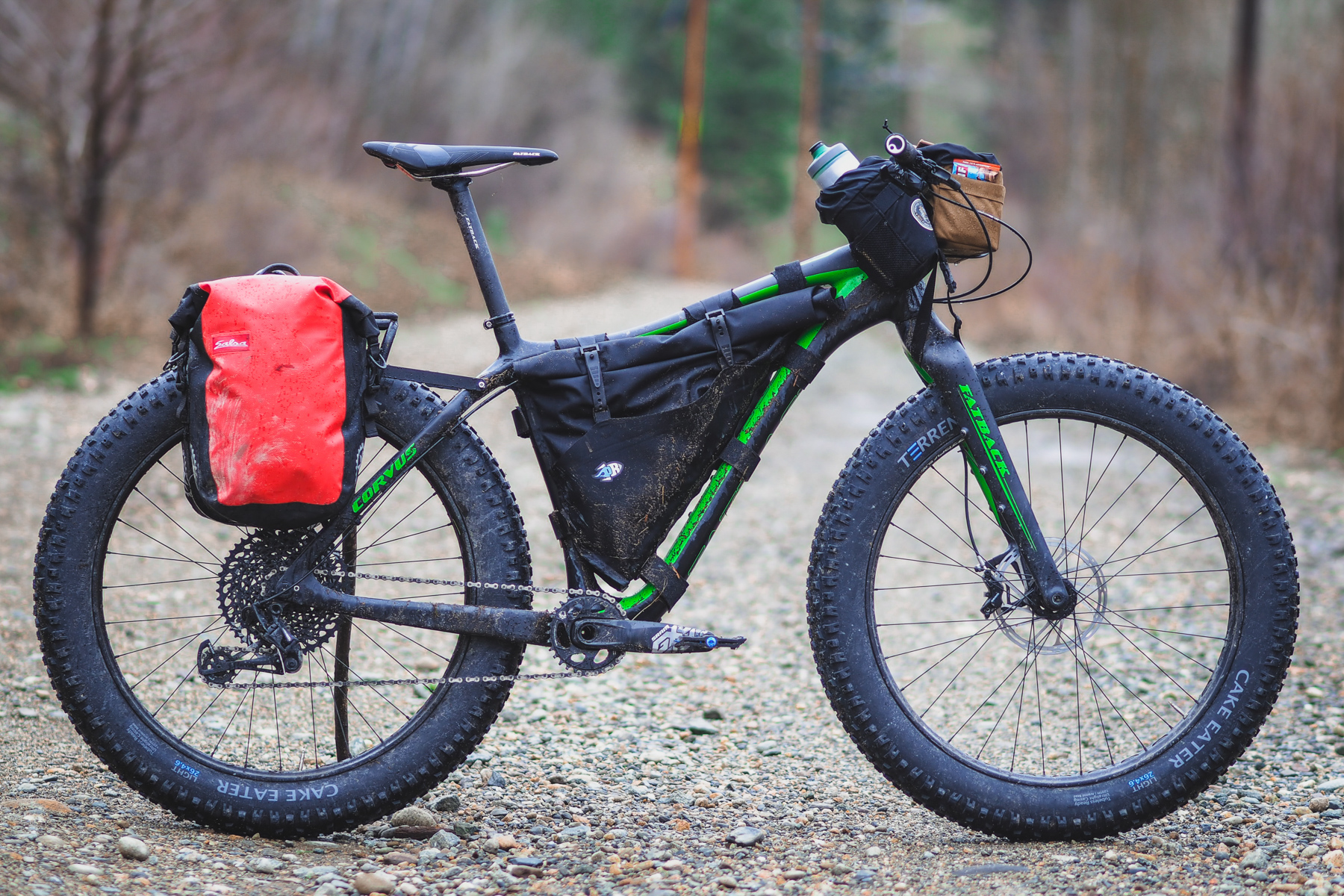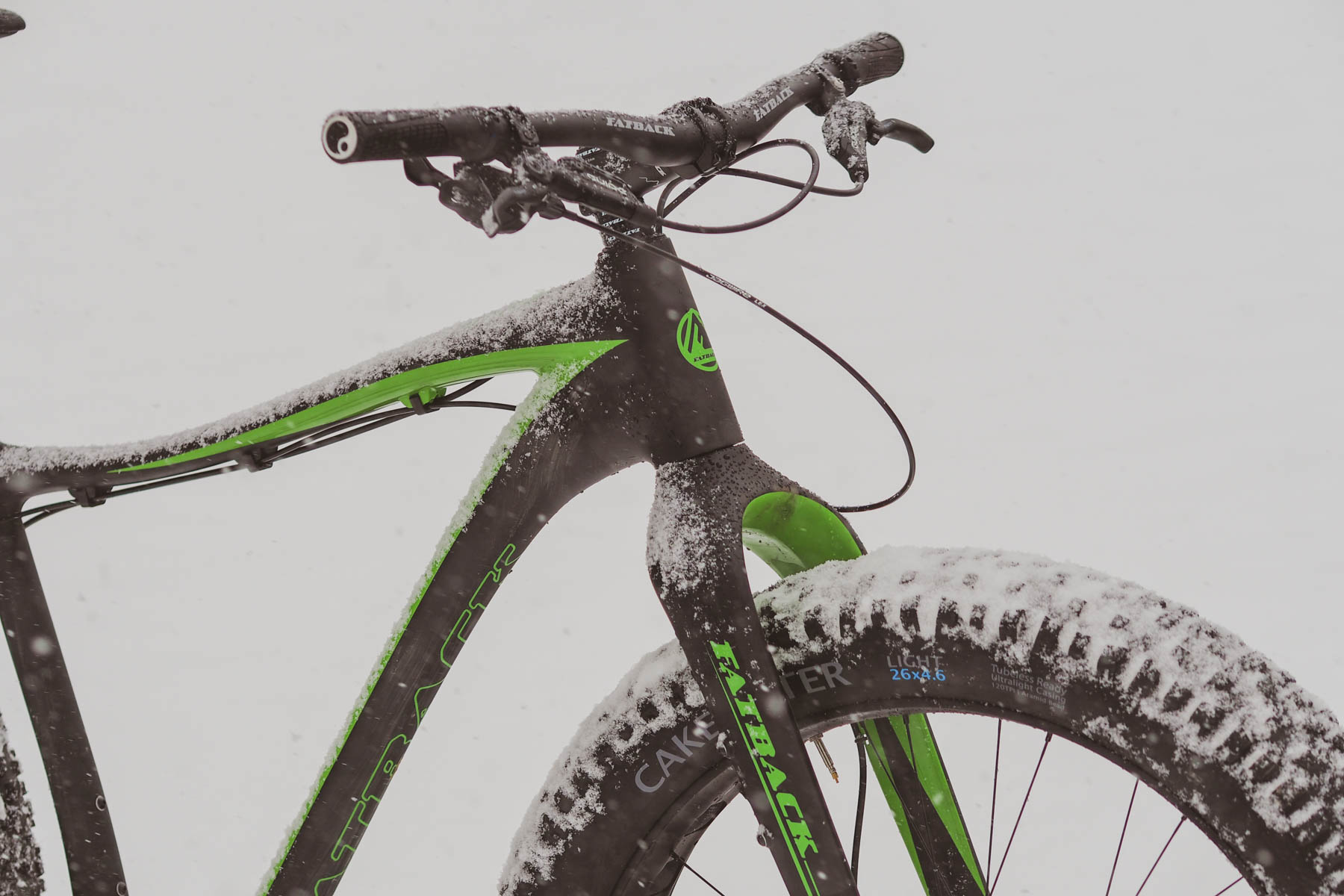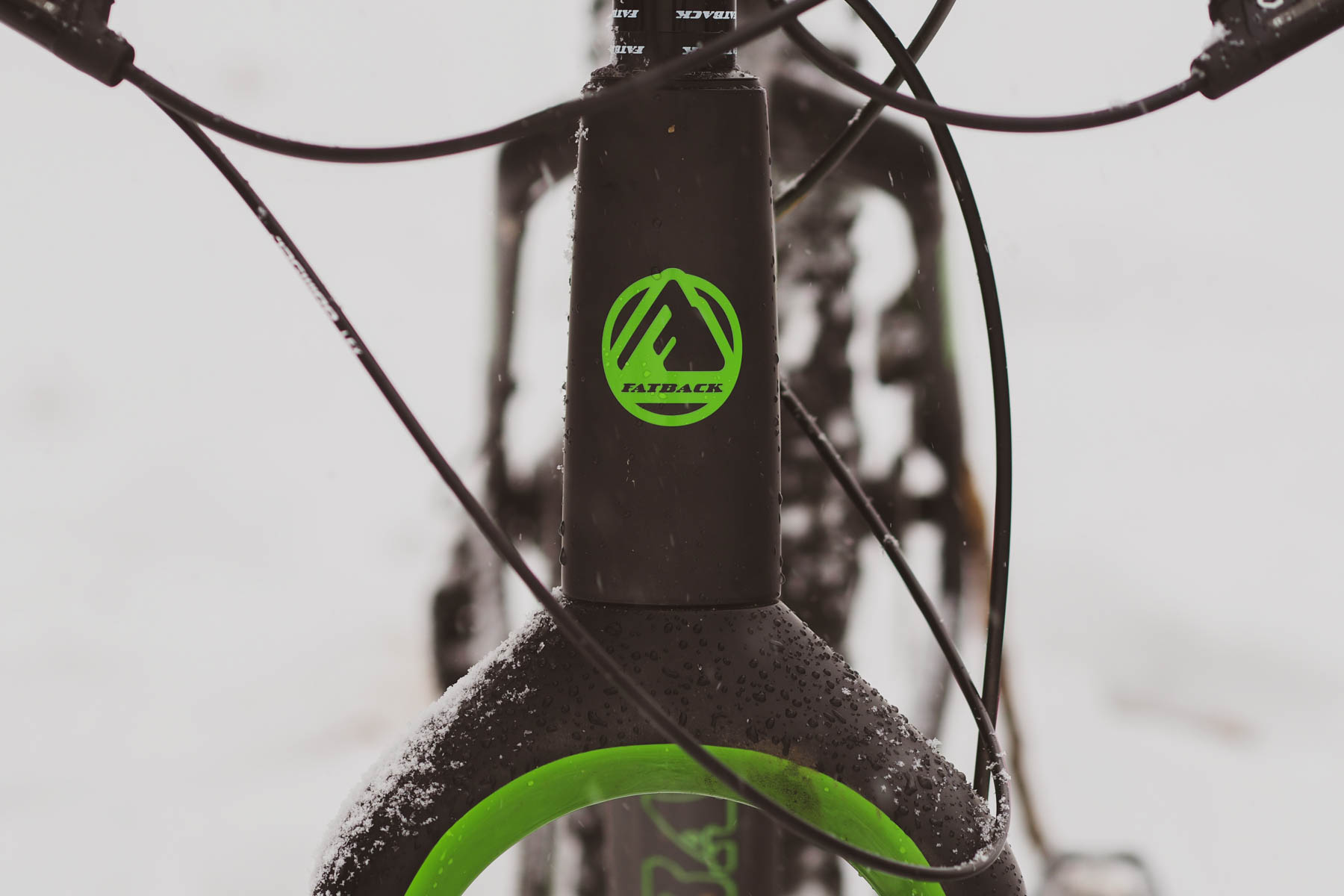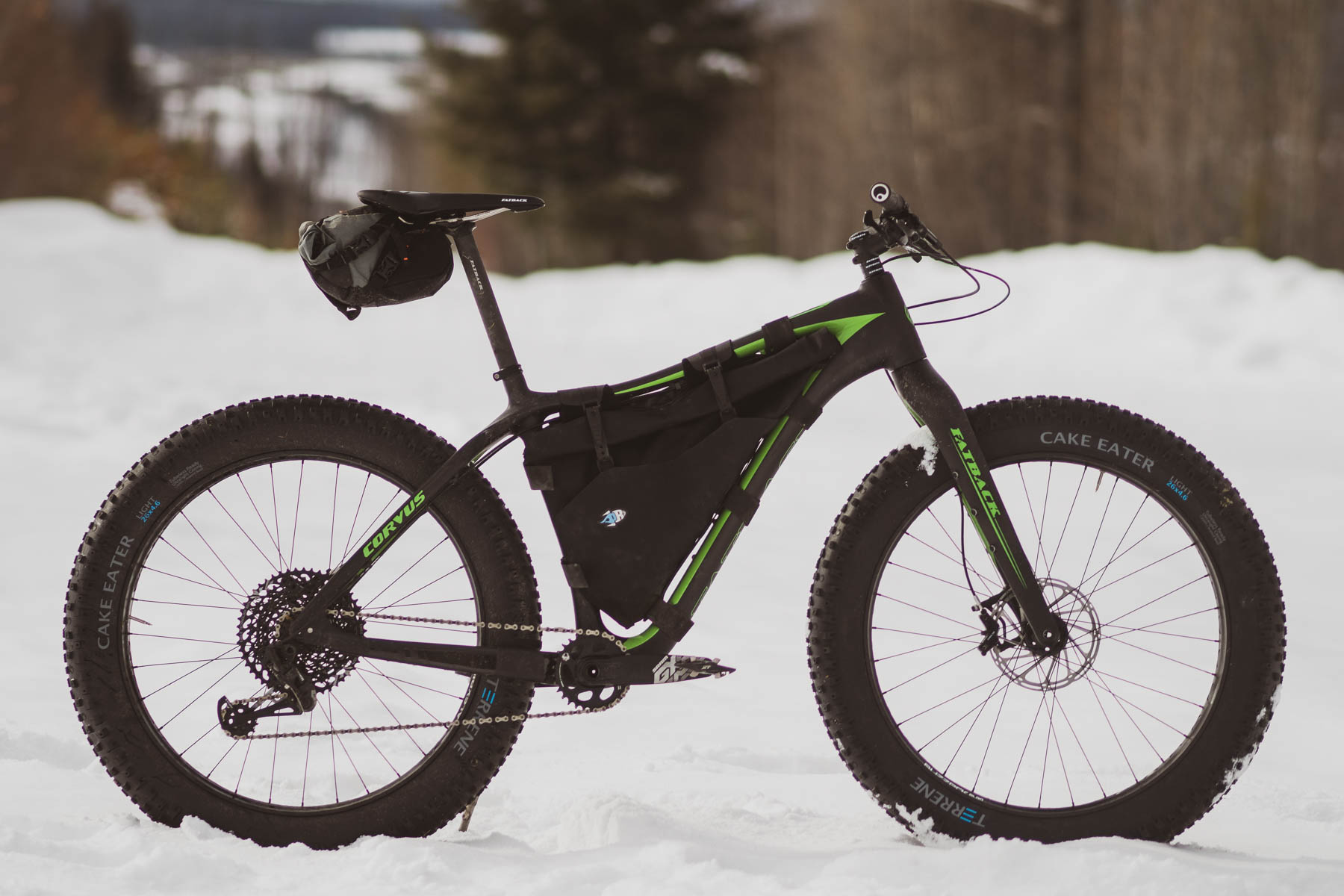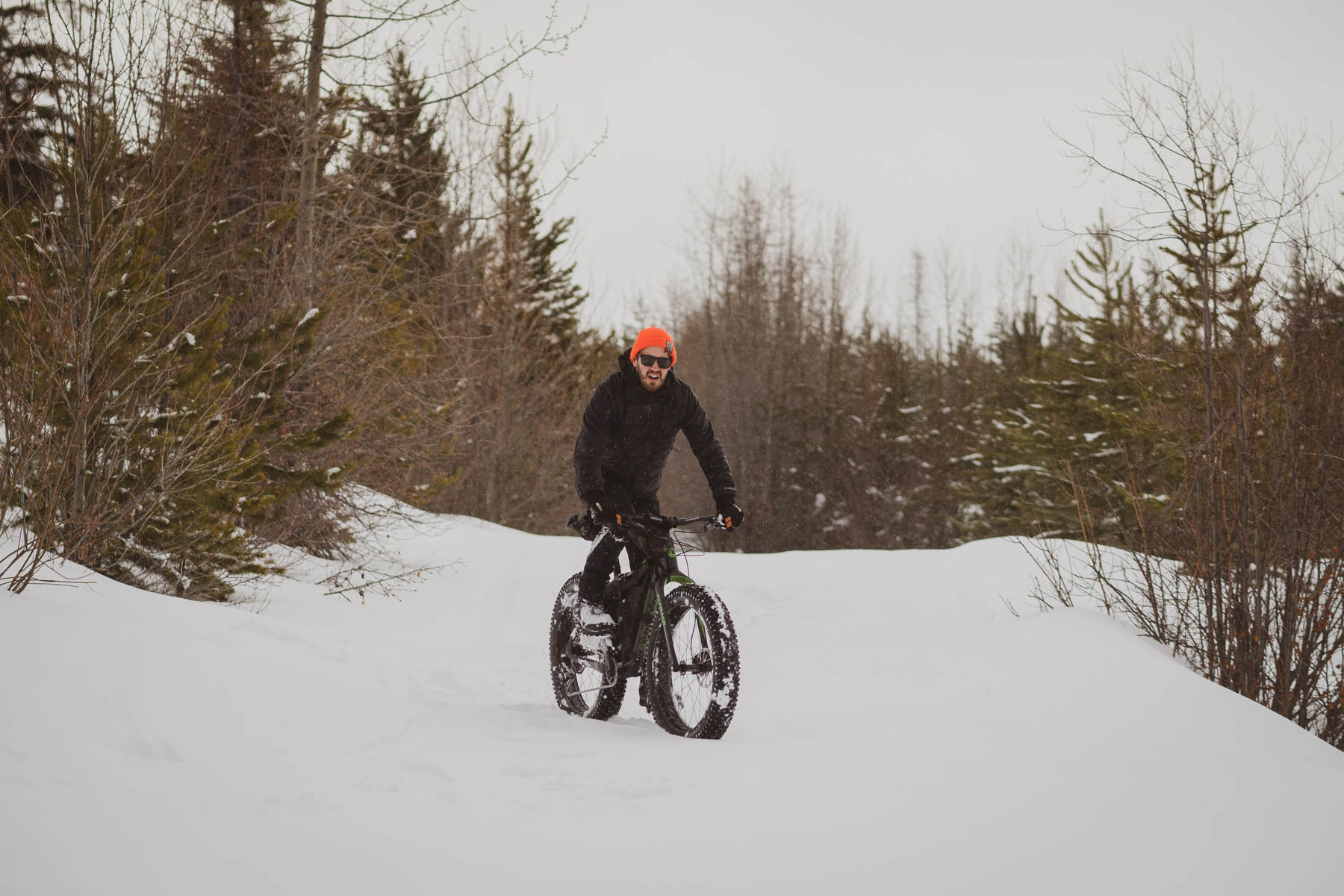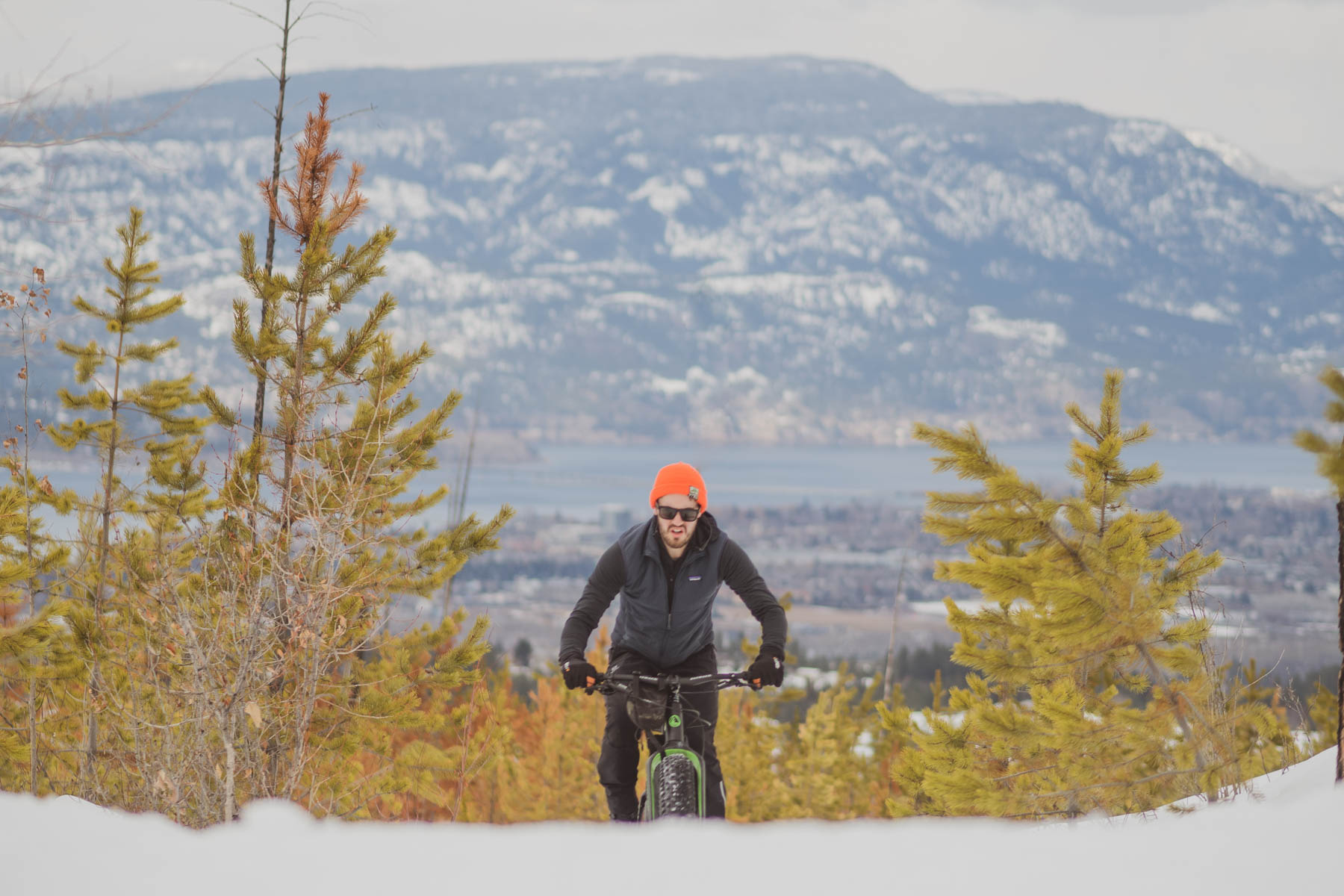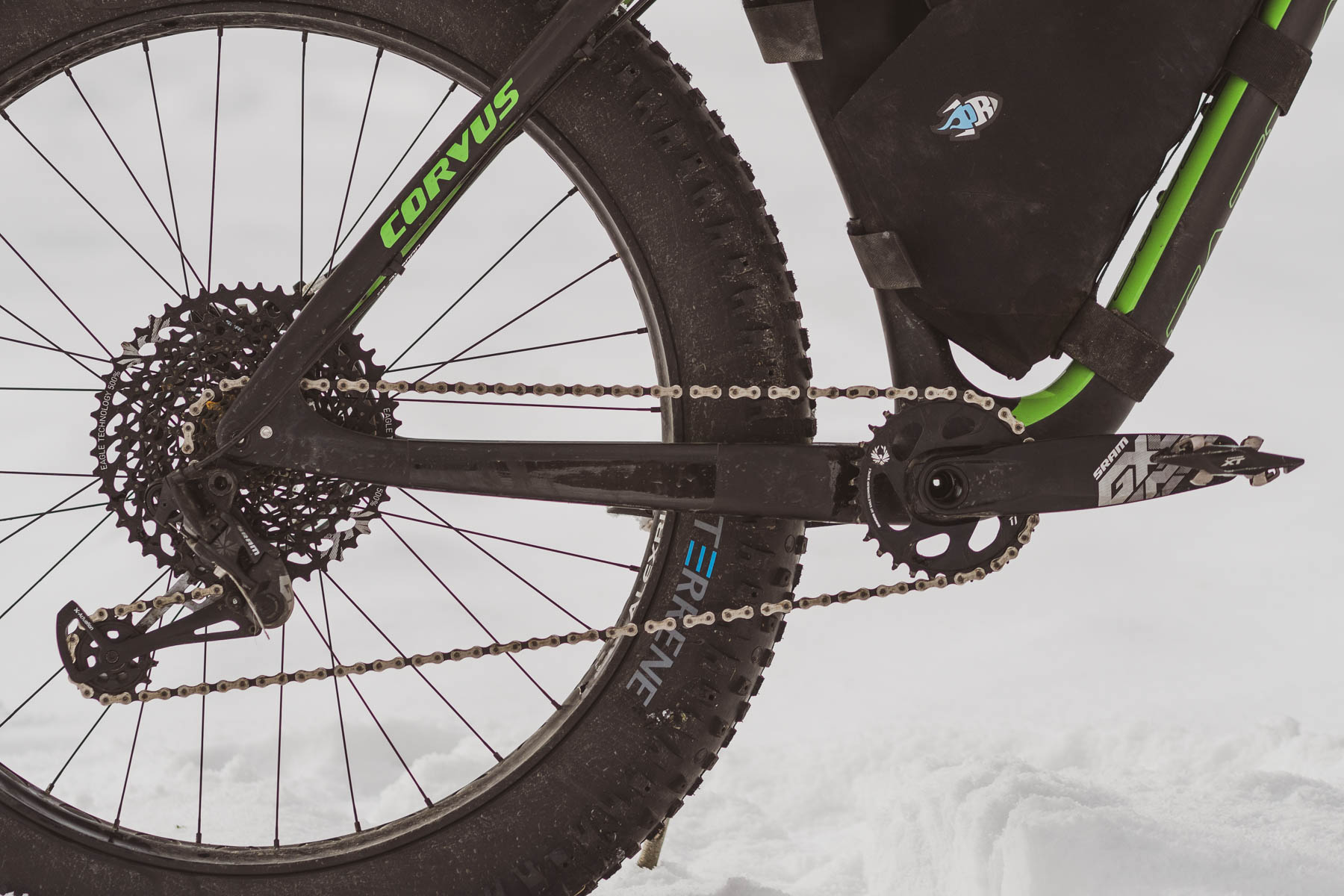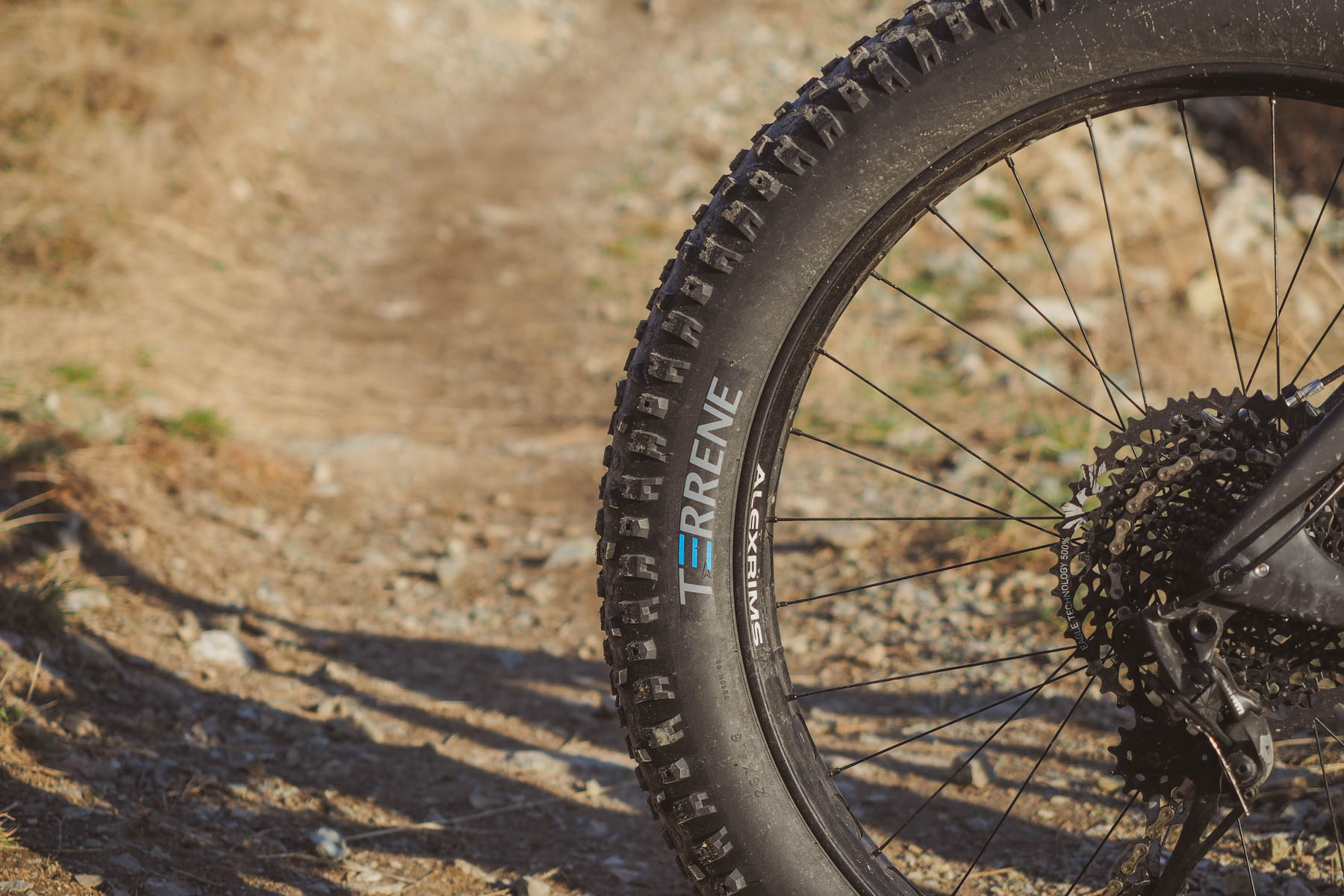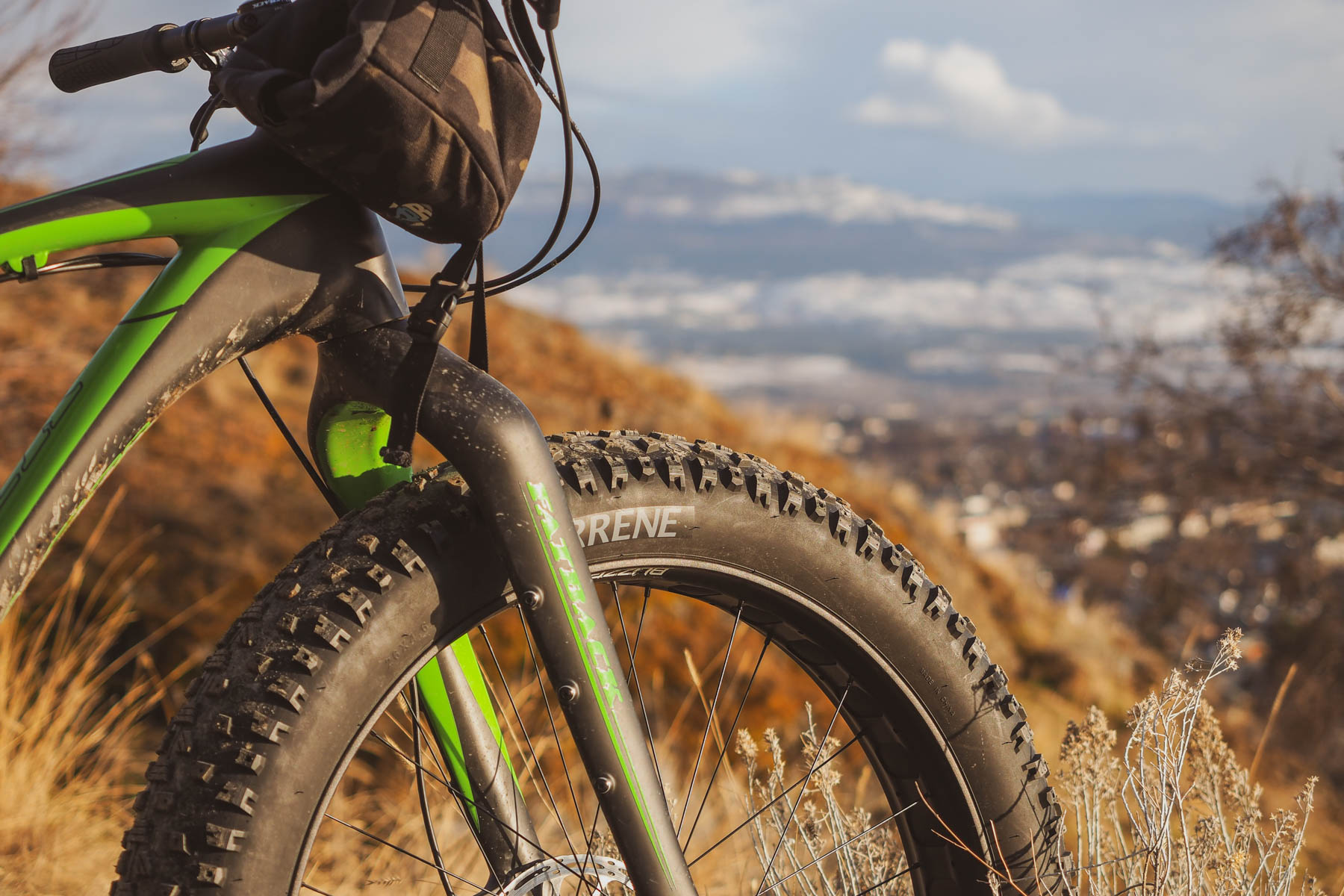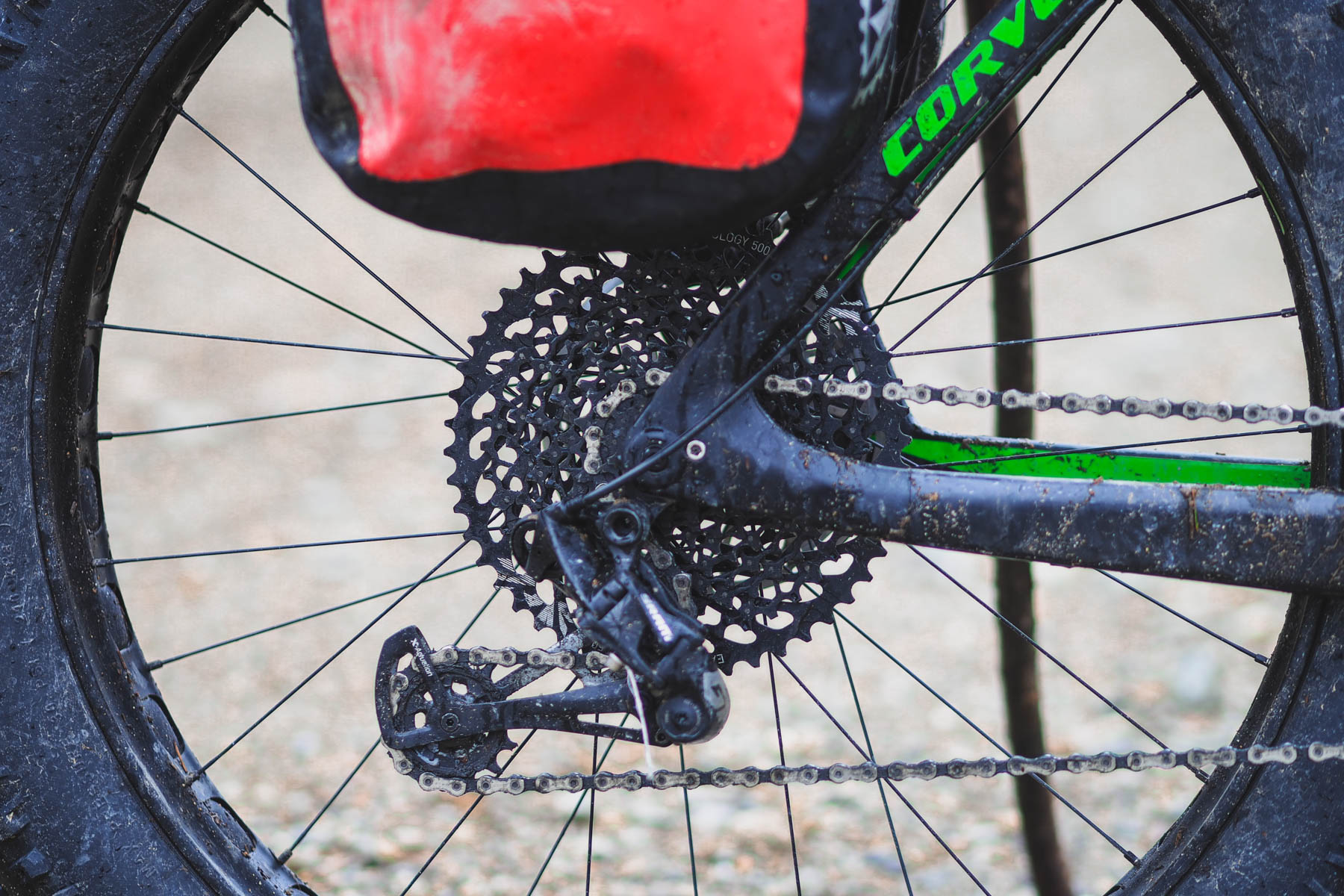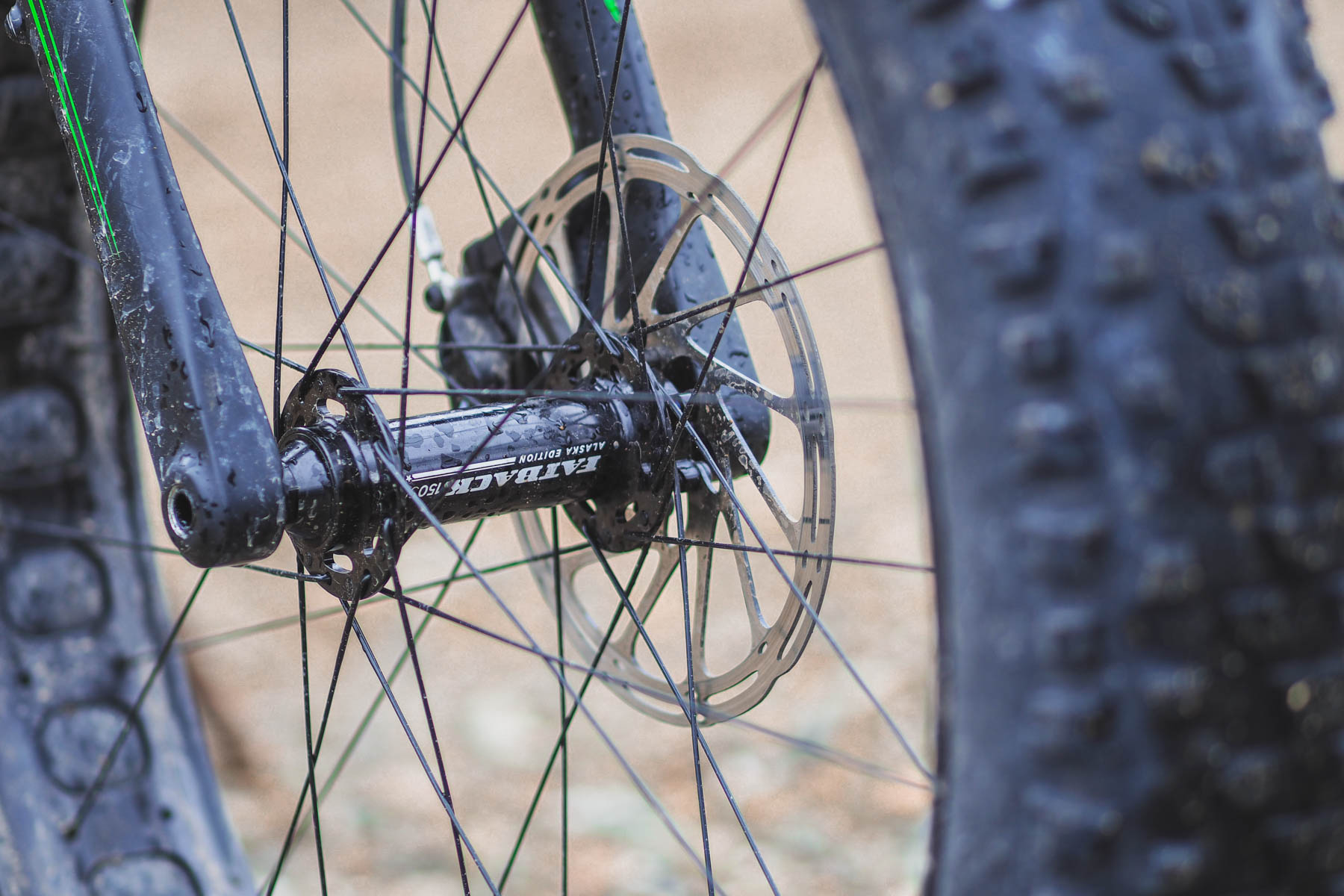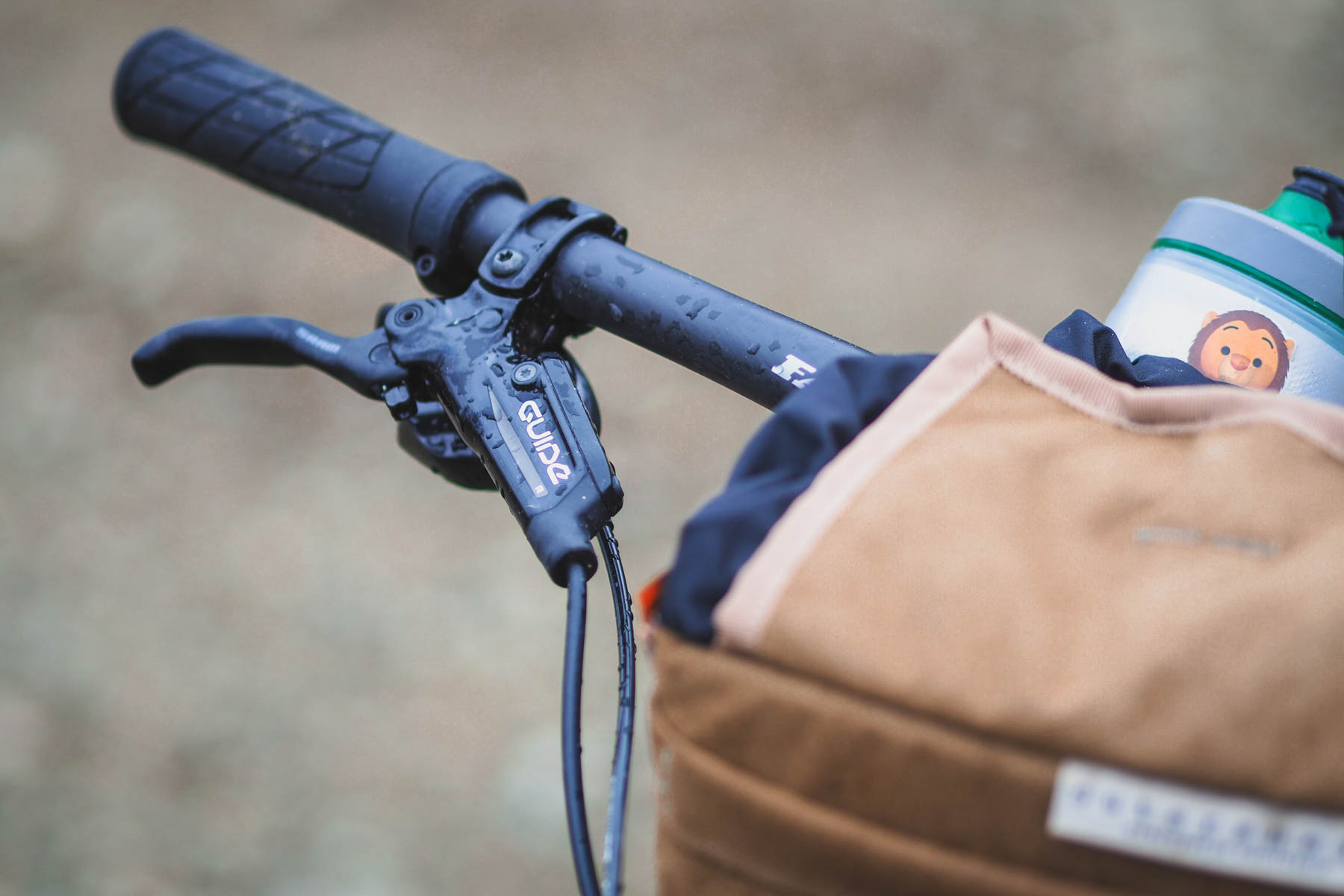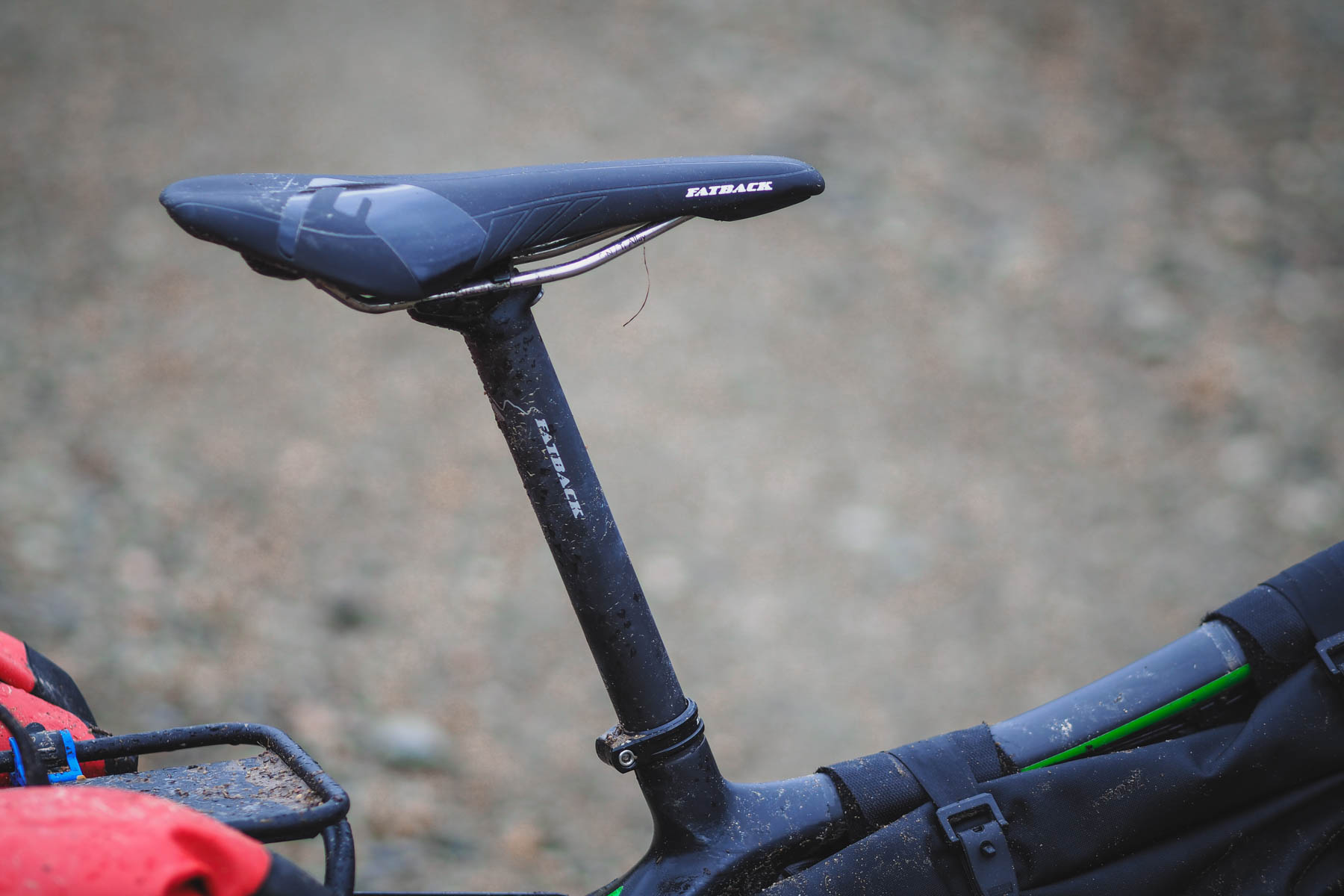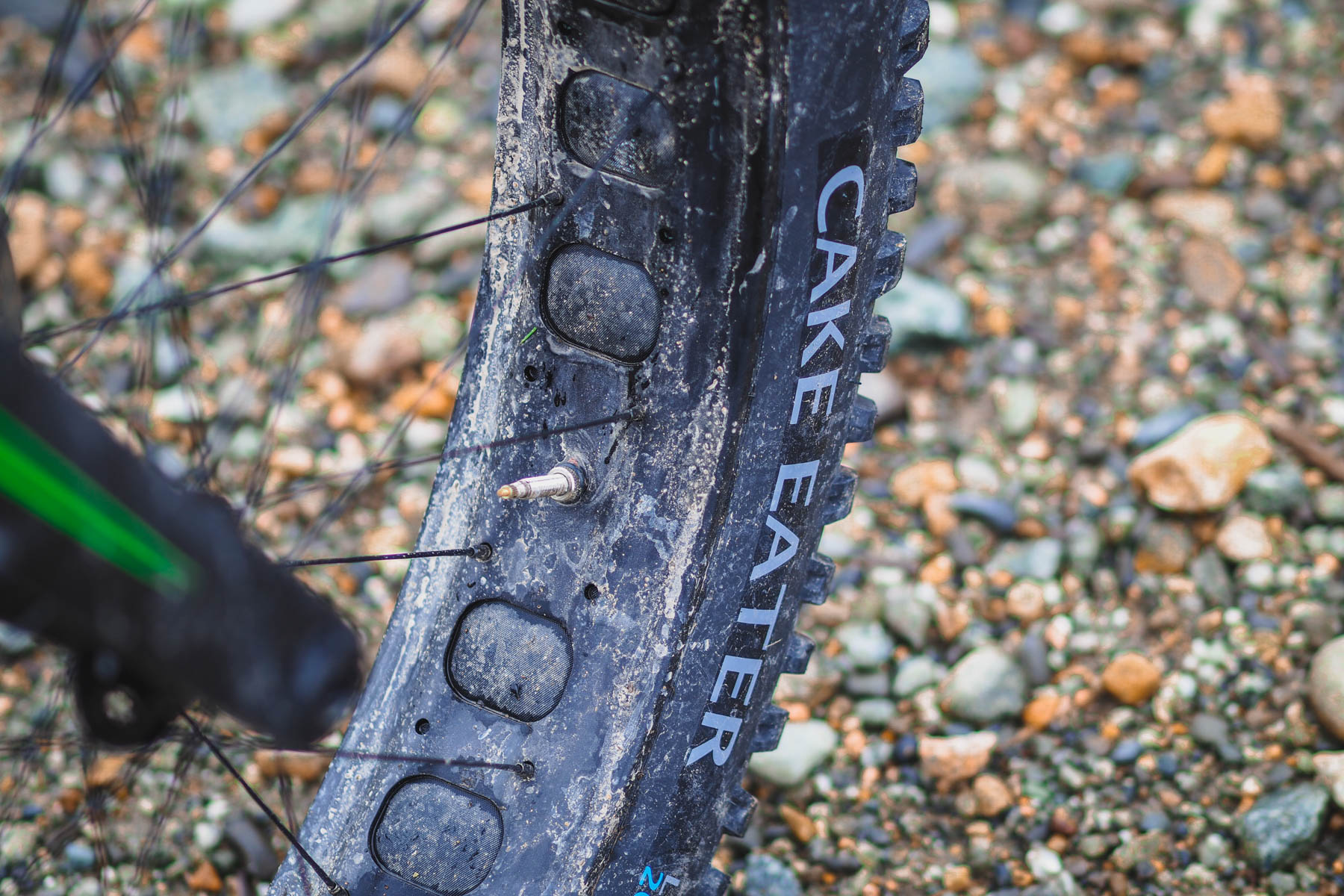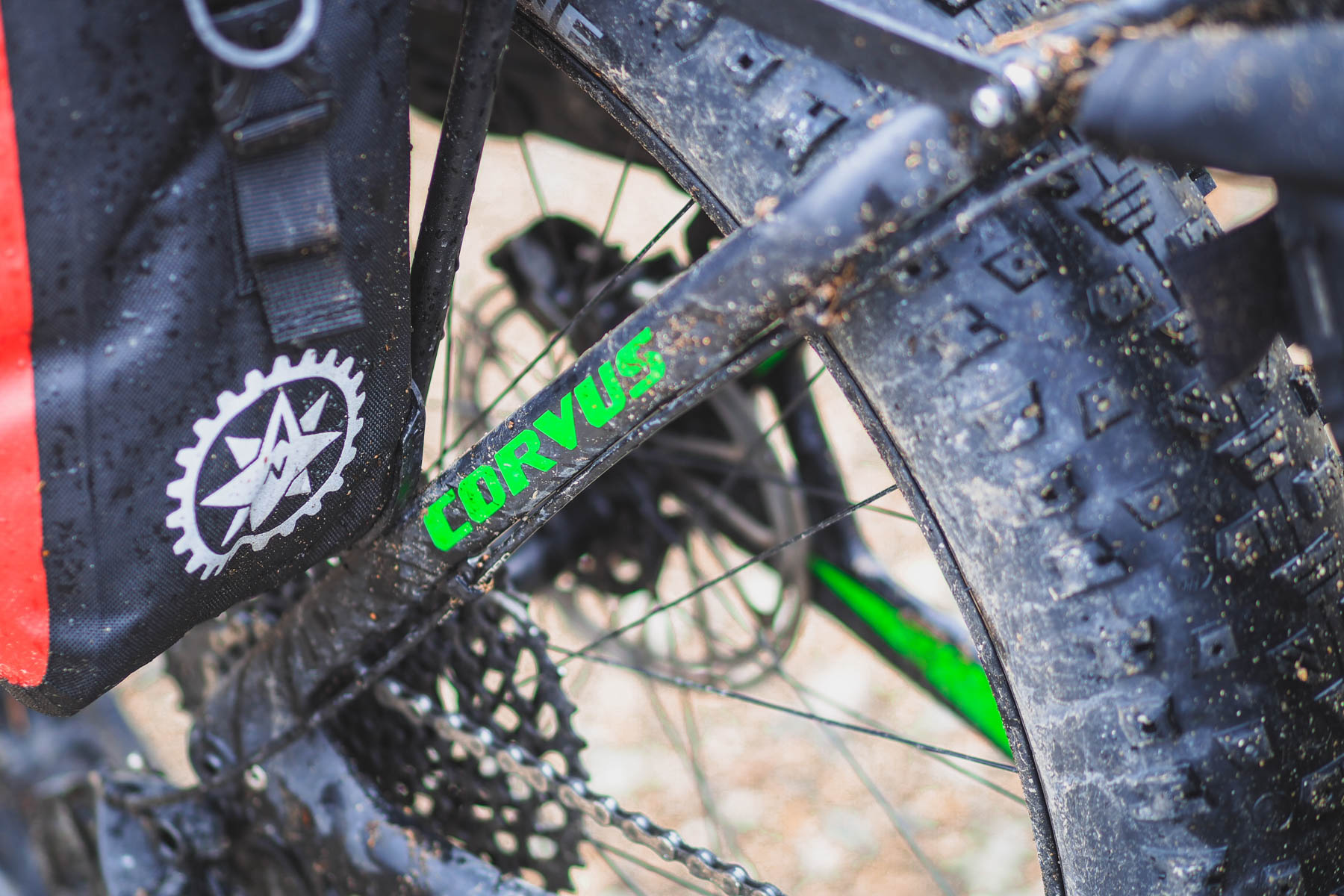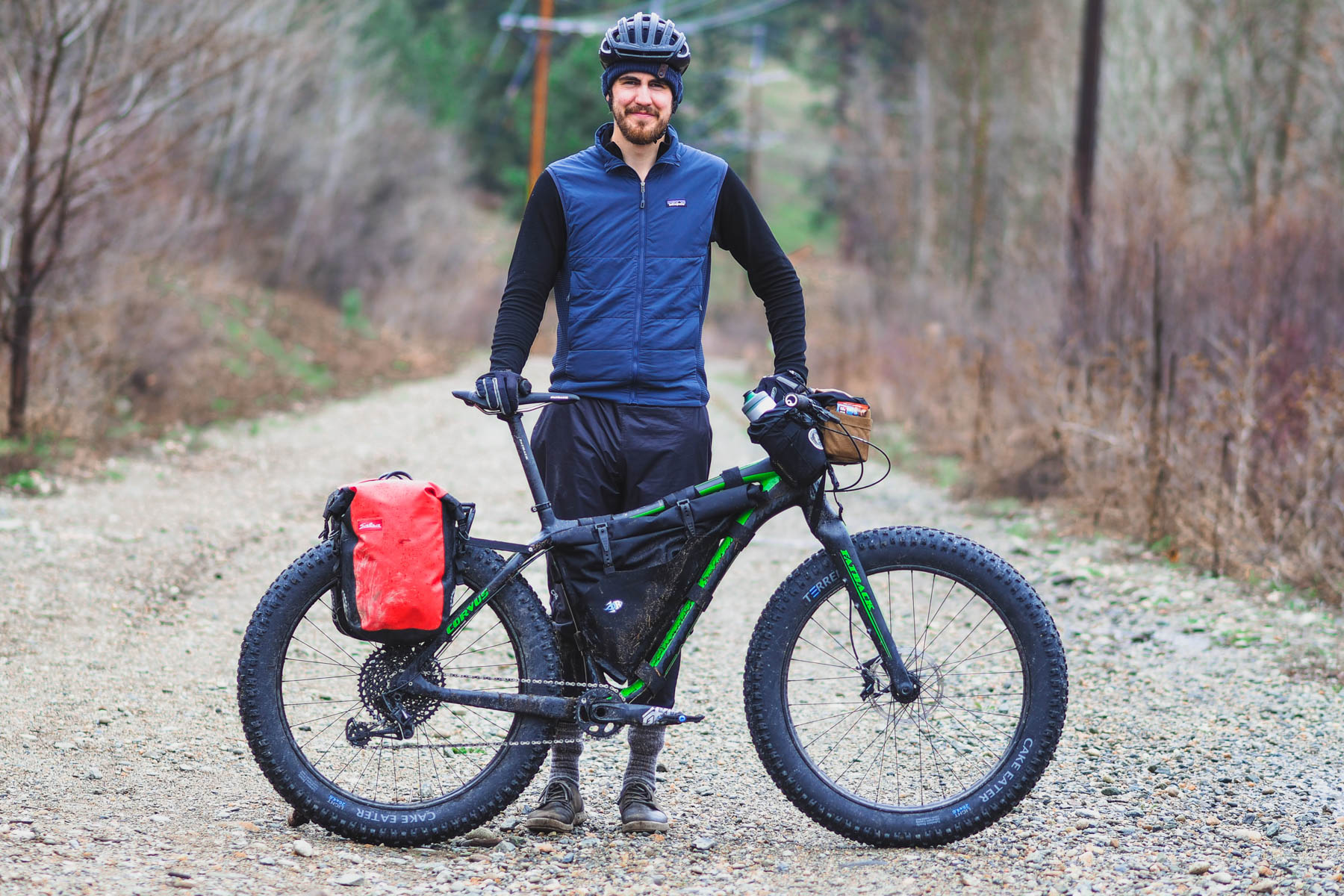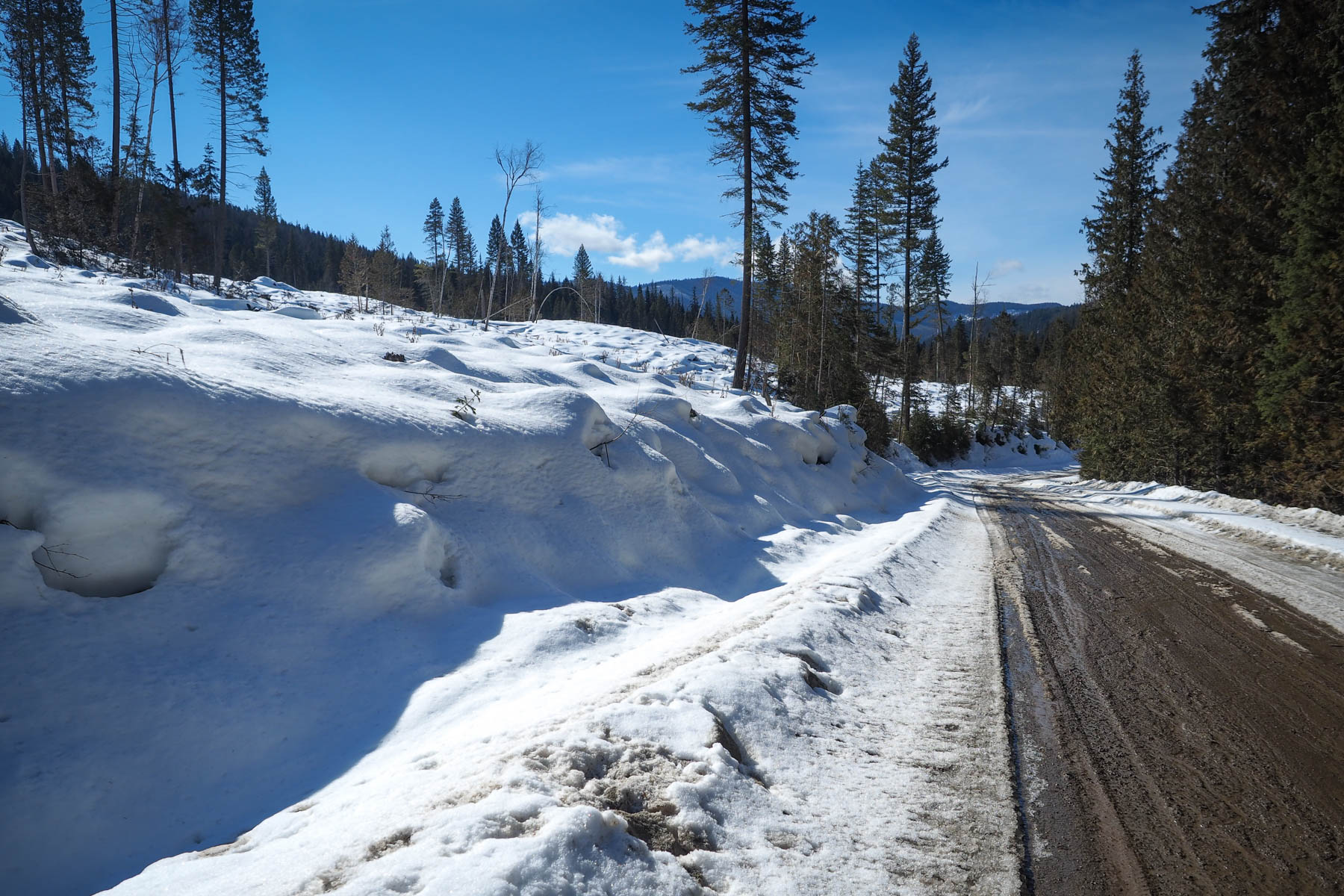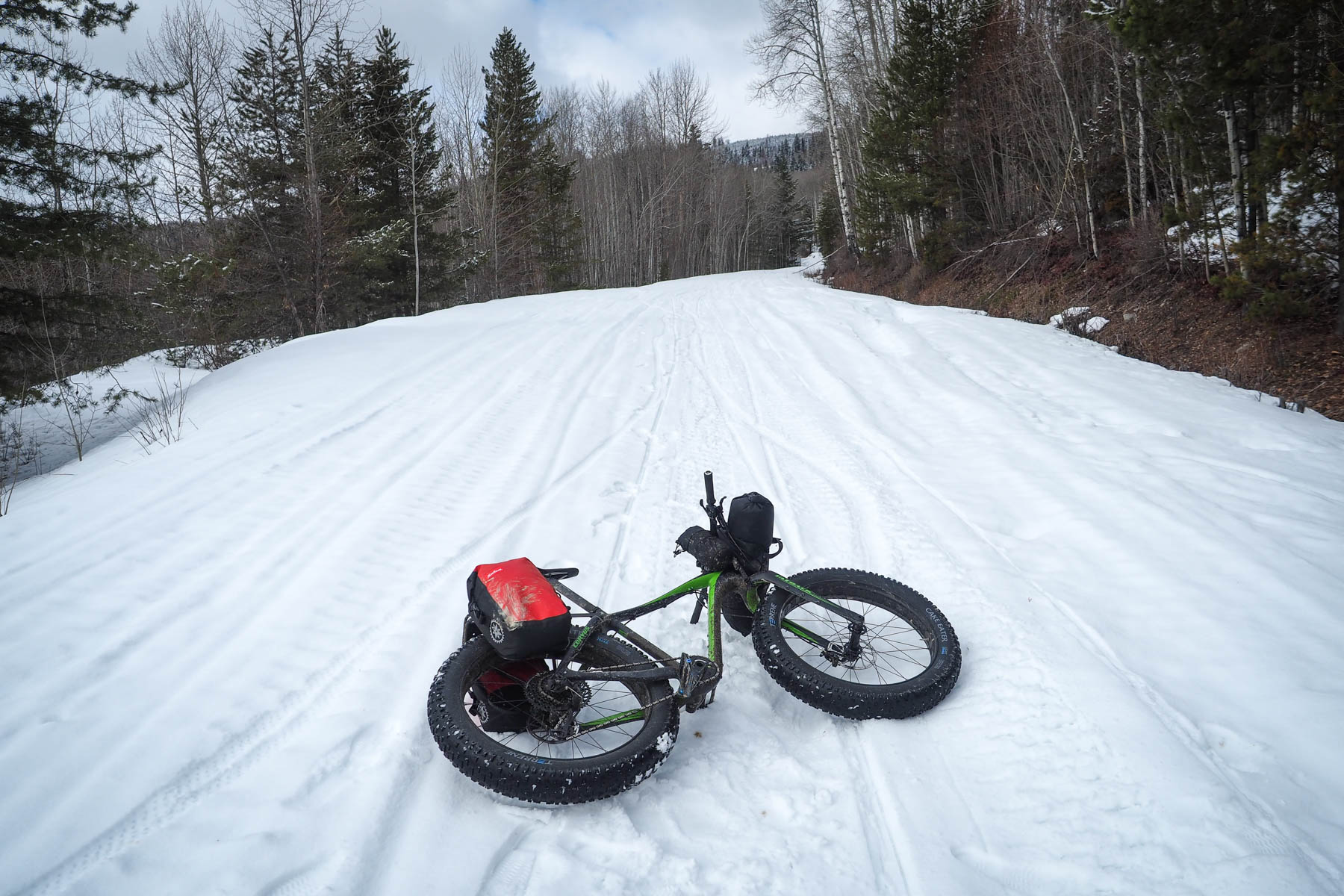Fatback Corvus Review: The Evolution of Fat
Share This
Over the past few years, the Fatback Corvus has methodically evolved into a fat bike that checks many of the boxes for those in the winter ultra scene, bikepackers, and anyone searching for endless possibilities all year long. How did it handle the winter and an unpredictable spring melt in British Columbia? Read on to find out…
Not everyone will be immediately familiar with the Fatback name. In fact, just a few years ago, I would have been included in that crowd. This is likely because the Alaska-based bike manufacturer has been passionately focusing on just one thing since 2007: fat bikes. Although Fatback won’t take responsibility for inventing the fat bike, they’re certainly confident in saying they “reinvented it.” From the introduction of the 170mm symmetrical hub in 2008 to the new industry standard 190 and 197mm rear hubs for 5” tire clearance, Fatback has played a huge role in the progression of comfortable and efficient fat bikes.

- Highlights
- Frame: Carbon
- Seatpost: 31.6mm
- Bottom Bracket: Threaded 100
- Hub specs: 197x12mm (rear); 150x15mm (front)
- Max tire: 26×5″ / 29×3″
- Weight: 28.4lbs/12.9kg (Large with Fyxation pedals)
- Price: $3,499 (GX1 Eagle)
The Fatback Corvus has created quite a name for itself in the world of adventure-ready fat bikes since its initial release four years ago. Back in 2016, Fatback gave the Corvus a face lift by adding Anything Cage mounts on the fork, more tire clearance, a slacker front end, and shorter chainstays. As Fatback puts it, “The Corvus represents 10 years of fat bike development, culminating in the most refined carbon fat bike available anywhere.” It’s a bold claim, so we decided it would be a good idea to ride one for ourselves.
The current Corvus is offered in six different builds: SLX, XT, GX1, XO1, GX1 Eagle, and XO1 Eagle, which should accommodate any rider preferences out there. A carbon frame and fork offer generous clearance for the stock Schwalbe Jumbo Jim 4.8” Lite Skins mounted on Alexrims Blizzerk SL 90s. We got our hands on the GX1 Eagle build, delivered with upgraded Terrene Cake Eater 4.6” Lights for some fun in the snow, dirt, and all those less-than-desirable conditions in between.
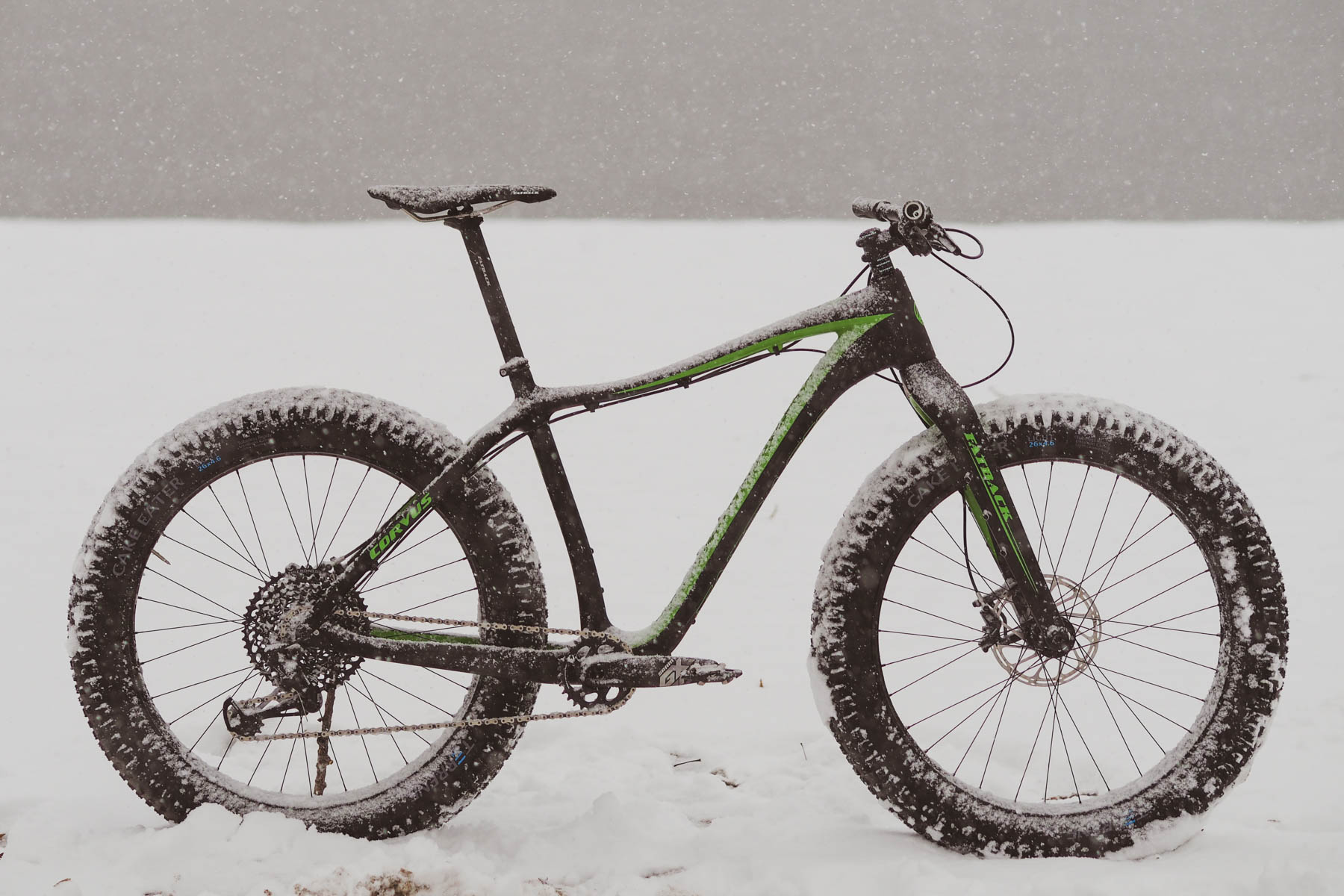
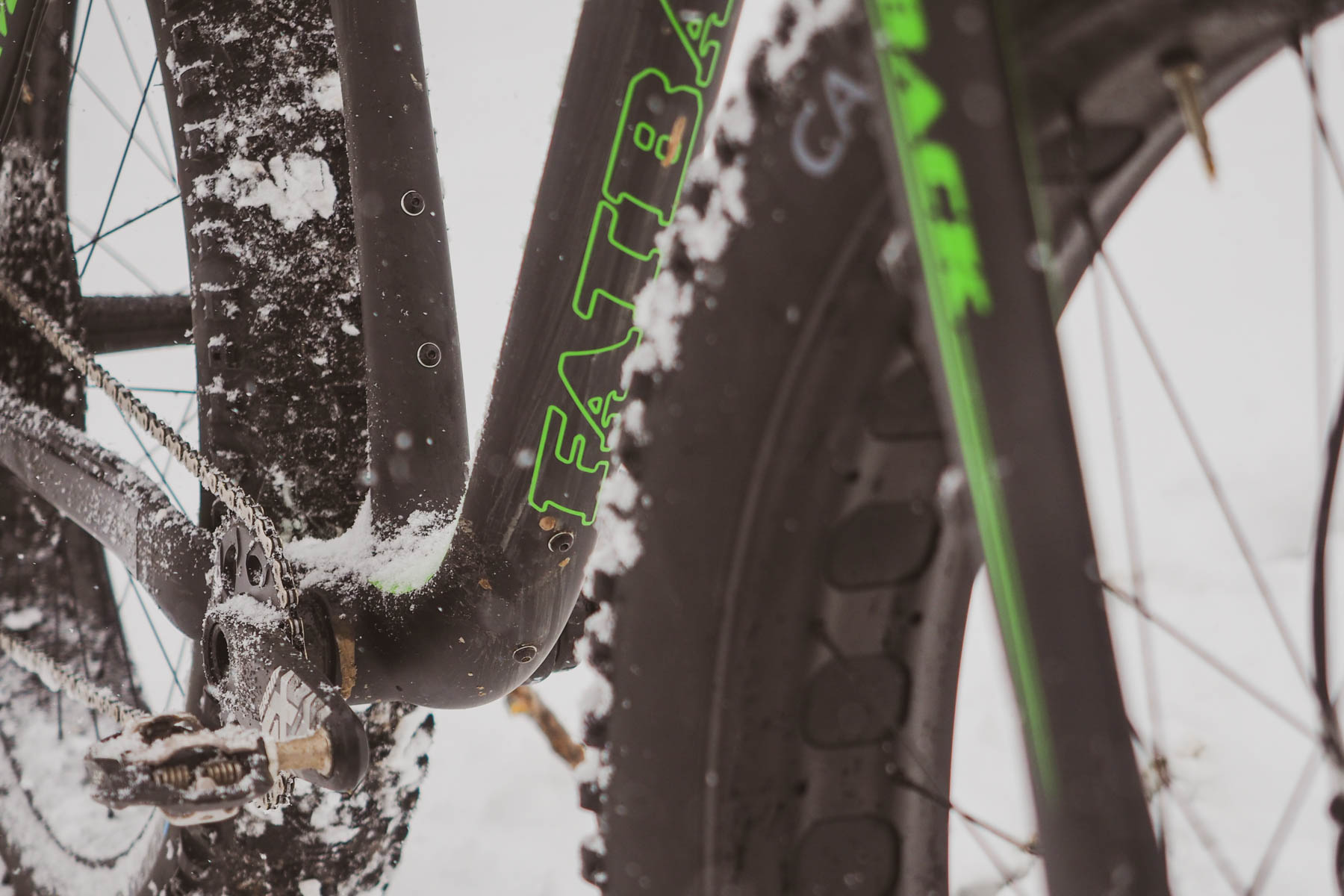
Unlike many other carbon bikes we’ve reviewed, Fatback has obviously been paying close attention to what features are valued in an expedition-friendly bike designed for speed. Their fat bikes are often seen at winter ultras like the Iditarod Trail Invitational in Alaska, and have proven to be quite capable more than a few times. To start, Fatback added rear facing Anything Cage mounts on the fork, two bottle mounts in the main triangle, and an additional mount under the downtube. It’s also great to see a huge front triangle, which swallowed up my large Porcelain Rocket 52hz frame bag in the best possible way, a key ingredient that’s often sacrificed in the name of preserving standover height. And, last but not least, a threaded bottom bracket. Pressfit skeptics, rejoice!
Fat Bike Geometry
Undoubtedly, any bike that was designed for riding on snow is going to feel markedly different than your average trail bike. It’s not just a matter of slapping on some big tires and calling it a day, especially when the goal is to make a fat tire bike fast. One concern is having proper weight distribution in soft terrain. While it’s fun to quickly float over some snow or sand after tossing all of your weight over the back end of the bike, this doesn’t really work if there is no hard packed salvation on the other side. Weighting the front tire, while not losing traction on the rear, is accomplished with shortened (but not overly shortened) chainstays and a steep headtube angle. The result is a fairly aggressive, but stable, position.
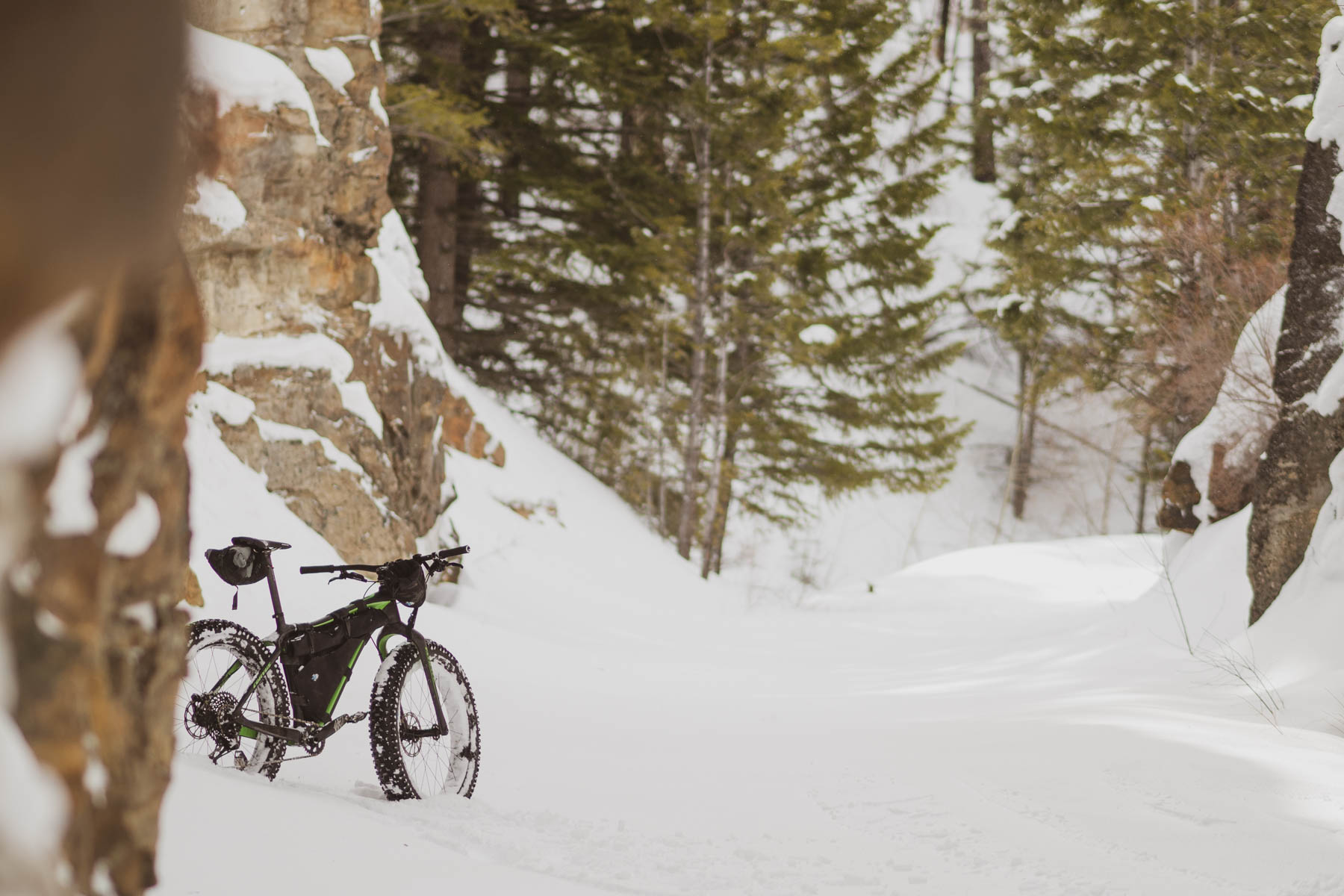
To be honest, the first time I got on the Corvus I was taken off guard by the position it put me in. I was pushed further over the front axle than I imagined I’d be, and the result was slightly twitchy steering that took some getting used to. However, on snow and in unpredictable terrain, the Corvus rode straight, climbed smoothly, and responded much better to a light touch. Riders will often describe fat bike handling as “self-steering” due to the larger width tires and lower tire pressure, which can feeling like tugging or grabbing when moving at slower speeds. This feeling still exists, but significantly less so at higher speeds or while descending with weight over the rear end.

To offer a comparison, the Fatback Corvus and Salsa Mukluk share more than a few similarities when it comes to geometry, build options, and price point. Both sport an updated, slightly more aggressive geometry, notably a 69° head tube angle and 73° seat tube angle. Both bikes keep the rider’s weight low, centered, and stable, but the Mukluk offers a shorter chainstay length, at 440mm or shorter (depending on the frame size), compared to the Corvus at 455mm. This also relates to the longer wheelbase of the Corvus, which helps create a solid platform when navigating loose and uneven terrain.
Both Salsa and Fatback offer GX1 Eagle builds for $3,499, as well as higher end XO1 Eagle and lower end SLX. It would have been nice to see a cheaper build from Fatback, ideally in the sub $3K category, although their prices are right on par with similar carbon fat bike offerings. Salsa managed this with the Mukluk, rolling out a non-carbon NX1 version that’s still a great bike but is a little easier on the wallet. In the end, you get what you pay for, and Fatback is clearly catering towards the high-end crowd.
A COMPLEX PUZZLE
“I’m not sure where to start, the geometry is a very complex puzzle to get the desired effect. Changing one angle or dimension affects another, then you have to consider the wheel size and weight for fat bikes, as that can have an effect on the way a bike handles more than a skinny tire bike.
I would love to say we just needed to shorten the TT or change the headtube angle a bit. But, all I can really say is over the 11-year history of making fat bikes, we know them better than anyone else. The Corvus is our bike for the snow/loose/deep and we made it awesome for riding in the snow/loose/deep. Not to say it isn’t great loaded for bikepacking in the dirt, too! If you look at the geometry chart between the Skookum and the Corvus, they may look similar; a couple millimeters here, half a degree there, but they ride like completely different bikes.
We designed the Corvus to really “plane” in those softer conditions by keeping the rider balanced on the bike and keeping weight low, and secondly to be playful and agile so that you would want to ride it year-round. The reason the Corvus rides the way it does is the sum of all its parts, not just an angle here or there.”
– John Mylne, Fatback Bicycles Brand Manager
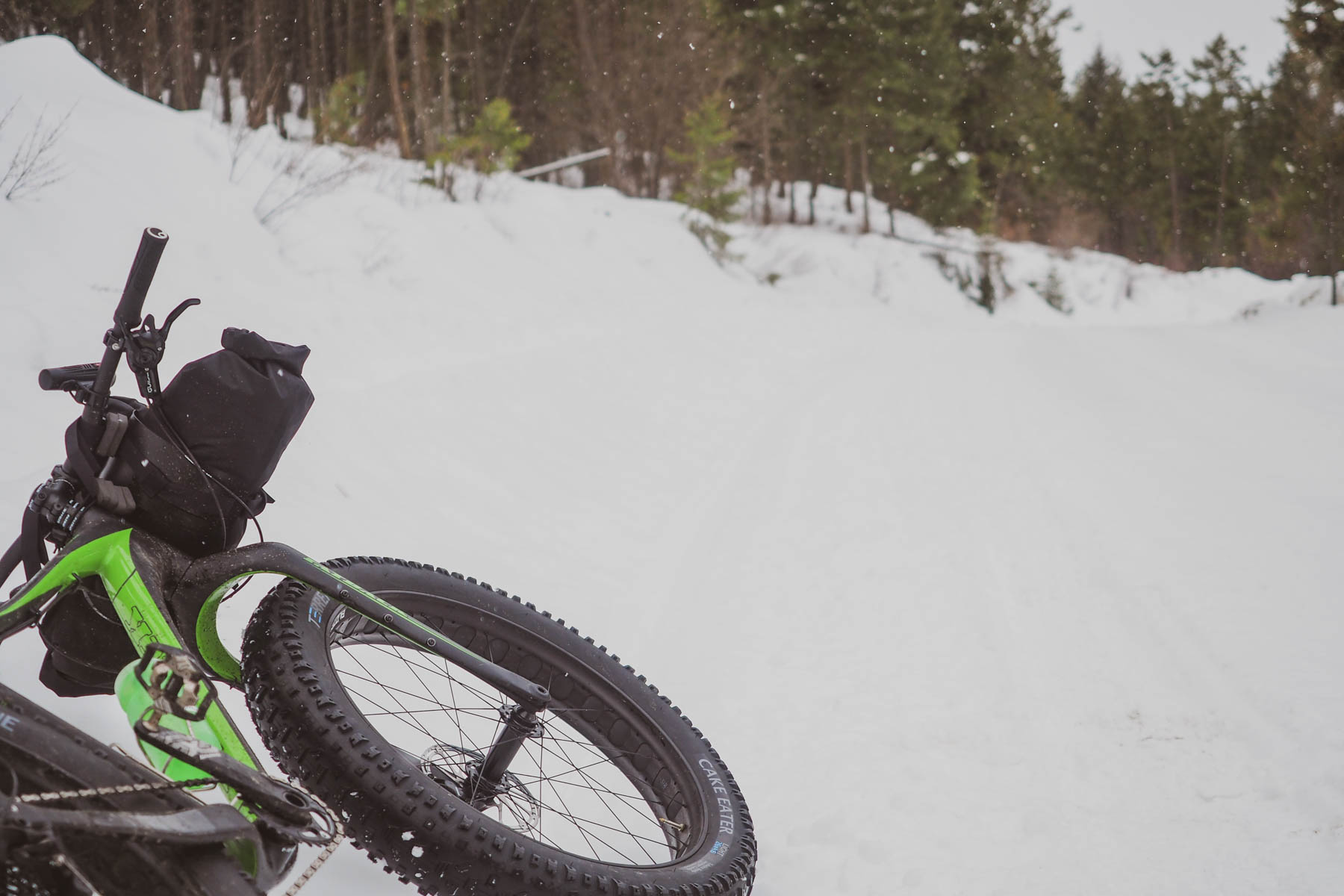
Make Fat Fast Again
Fat and fast aren’t words that are paired very often when it comes to bikes. Fat bikes are satisfyingly stable, making them a fantastic option for bikepacking in remote areas when the terrain is unpredictable, and they handle being loaded with gear well. Besides the aggressive geometry of the Corvus, there are several other features that contribute to its ability to roll quickly and confidently in pretty much any conditions.
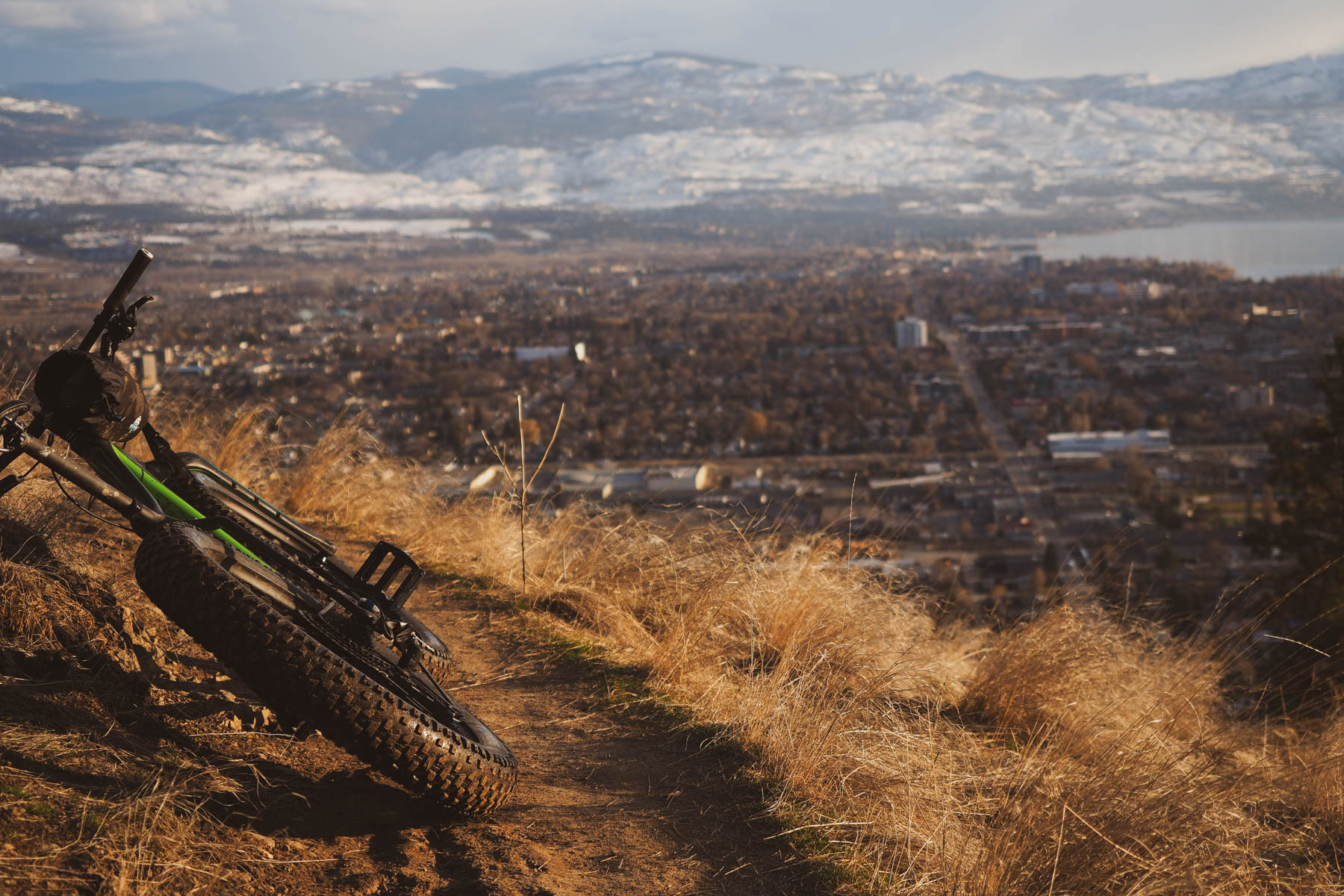
A heavy fat bike feels like a heavy fat bike, and there’s just no way of getting around that. Swapping larger wheels onto a carbon frame takes the advantages of the fat bike and opens up the possibilities of riding further, faster, and struggling less when it comes time to lift it over or up something. Even with 26 x 4.6” tires, the lighter and more aggressive design of the Corvus encourages speed, and it’s a weird feeling when considering what’s going on under you.
The Corvus I rode came with Terrene Cake Eater Lites, which aren’t the most aggressive fat tire out there, but offer a low and narrow centre tread designed to keep up speed when you want it. It actually felt considerably quicker on hard surfaces than the 27.5+ Surly Dirt Wizards that are on my Karate Monkey right now, which is often how I make my comparisons when it comes to speed. The stock 4.8” Jumbo Jim Lite Skins share the similar lightweight qualities of the Terrenes, but the centre tread won’t be as fast rolling—something to consider when checking out Fatback’s stock builds. On the other hand, the Cake Eater’s lower tread height isn’t as desirable for venturing off hard packed snow as the Jumbo Jim’s larger and more spaced tread. Thankfully, the Cake Eater’s are studdable if some extra traction is needed, while the stock Jumbo Jims are not.
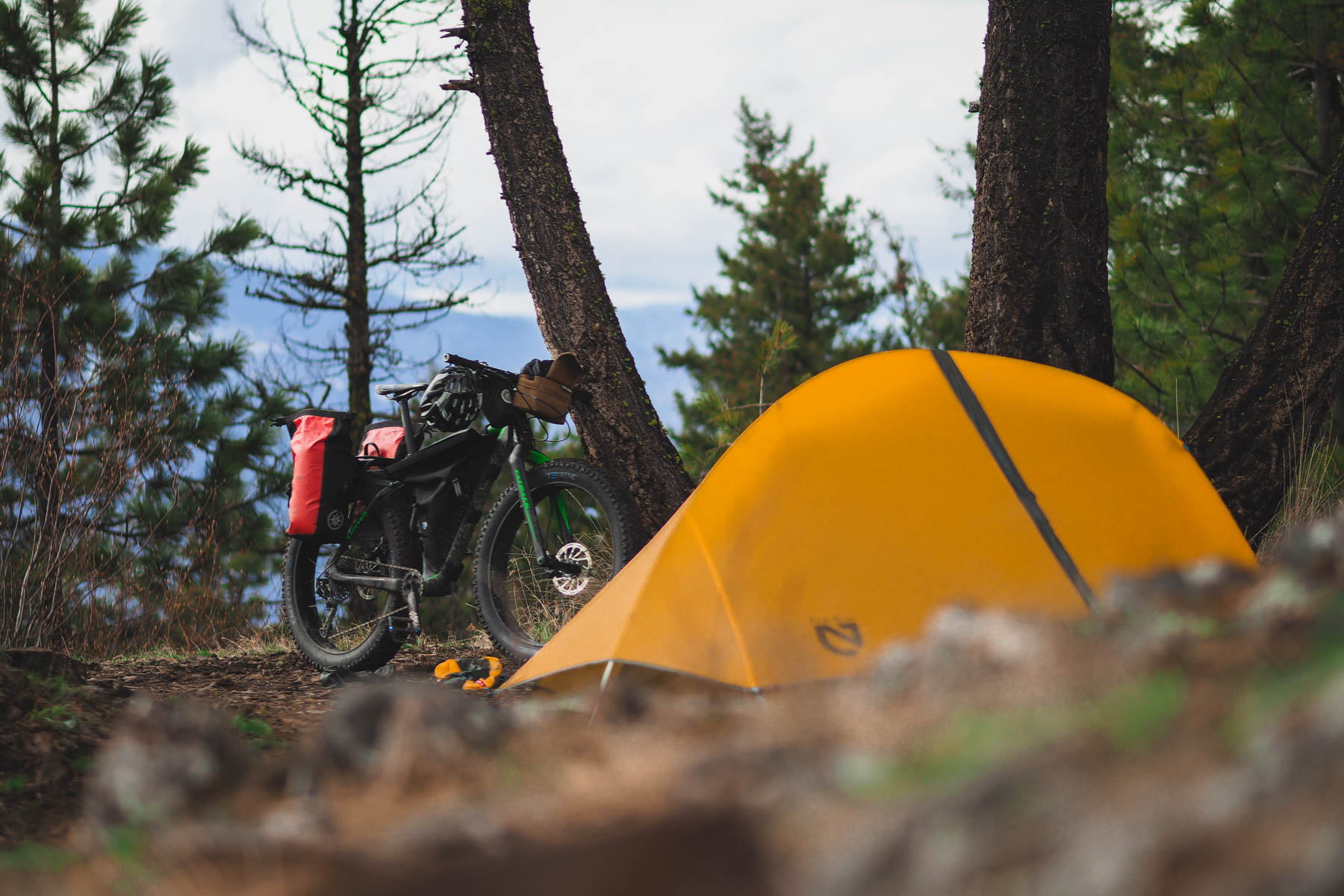
I found the SRAM GX1 Eagle drivetrain to be a great complement to the whole package. Whether I was punching up groomed singletrack or slogging up the steep, rutted, and snow covered forest service roads, I was always able to keep a manageable cadence on the way up, and maintain my speed on the way down and into the flats.
Fatback Corvus GX1 Eagle Build
As mentioned earlier, it’s not often you see so many different stock build options for the same frame. Fatback covers the 11-speed options with Shimano SLX or XT, plus Sram GX1 or XO1, and also offers 12-speed XO1 and GX1 Eagle configurations. Amongst these different builds, you’ll also see changes in cranks, brakes, and the Shimano SLX and SRAM GX1 models sport alloy seatposts and handlebars. There are a few other component changes between the lineup, but each model is worth its value, and they all correlate with their respective price tag.
It’s also worth mentioning that the Blizzerk SL90 rims came taped, ready for tubeless, and although the rear rim tape job seemed to be damaged in shipment, the front setup has held firm and true for over three months now. Depending on the conditions, I ran my pressure around 7-15 PSI, and the huge volume of the tires meant fantastic traction and a noticeable amount of cushion when cruising through chunky sections.

Like most modern fat bikes, the Corvus has the ability to run both 27.5+ and 29+ wheels when the extra flotation and grip of true fat tires aren’t needed. Fatback recommends maintaining a rigid front end when using 29+ wheels, but notes that running front suspension with 27.5+ can work as well. With a 60mm bottom bracket drop, it seems like it would possible with either 27.5+ or 29+, but it may be a bit more fitting for 29 x 3.0″ tires that have a diameter more similar to the Corvus’ intended tire diameter. I think a lightweight 29” wheelset on the Corvus would be a fantastic setup for summertime endurance rides and races, but testing that configuration wasn’t in the cards for me this time. If any Corvus owners out there have run different sized wheels, we would love to hear about it in the comments below.
Frameset
- Frame Corvus Carbon
- Fork Corvus Carbon
- Color Black / Green
Drivetrain
- Front Der n/a
- Rear Der SRAM GX1 Eagle
- Cassette SRAM GX-1275 10-50t
- Chain SRAM GX Eagle
- Crankset SRAM GX Eagle 30t
- Shifter SRAM GX1 Eagle 1x
- Brakes & Rotors SRAM Guide R Hydraulic Disc 180/160
Components
- Headset Fatback
- Stem Fatback TS1
- Handlebar Fatback TG1 Carbon
- Grips Ergon GA30
- Seatpost Fatback Carbon, 31.6
- Saddle Fatback Saddle CnR-Titanium
Wheels
- Front Wheel Alexrims Blizzerk SL90, Thru-Axle, 15 x 150mm
- Rear Wheel Alexrims Blizzerk SL90, Thru-Axle, 12 x 197mm
- Tires Terrene Cake Eater Lite 26×4.6”, Folding / Tubeless Ready
I was most interested in the GX1 Eagle build for a few reasons. First, I’ve wanted to get my hands on the more affordable 1×12 Eagle drivetrain for a while now, as I’ve been running Shimano and SRAM 1×11 for the past few years. Secondly, I think those interested in purchasing a fat bike of this calibre are going to give the option to run 1×12 some good thought, as the increased range definitely makes sense for a bike like this. When it comes down to the ride and feel of the Corvus, even the cheapest GX 1×11 build will perform great, and some may even prefer it. If you’re not interested in a complete build, Fatback also offers the Corvus as a frameset with their rigid carbon fork included for $2,200.
As expected, the GX Eagle drivetrain was snappy, shifted consistently and accurately, and required only minor adjustments to accommodate for cable stretch. I had no issues, and wouldn’t anticipate any arising, considering the pricetag associated with high-end drivetrains like this. I was happy riding in snow, gravel, and dirt singletrack with the 30t chainring and 10-50 GX cassette. When loaded up with gear, it was always a pleasant surprise to shift up into the huge 50t cog, making things a little easier on my young little knees. With a 30t ring up front and the smallest 10t in the back I was able to keep the pedals spinning on most non-technical descents and into the flats as well.
For once, we can also say that the bottom bracket choice won’t deter those on the hunt for an expedition-ready carbon fat bike. Rarely do we encounter any issues with press-fit bottom brackets, but on longer, international bikepacking expeditions, the simplicity and serviceability of a threaded bottom bracket has its appeal. And, some folks simply don’t like the idea, or the squeaking that sometimes ensues from a press fit.
Pros
- Dedicated fat bike geometry that really performs when riding in soft conditions.
- Impressive clearance for 26×4.6” (room for 26×5”) in both front and rear, while still keeping within almost normal q-factor range.
- Threaded bottom bracket is good to see on a carbon adventure bike.
- All of the eyelets you could need including Anything Cage mounts on the fork, two bottle mounts in the triangle, plus another under the downtube, as well as rear rack mounts.
- Several build levels from 11-speed GX to 12-speed XO1 Eagle, depending on budget and personal preferences.
- Adventure ready and built for speed due to carbon frame, good components, and reputable brand.
Cons
- May not be within everyone’s budget but is definitely within the norm for a carbon fat bike.
- The new Corvus geometry may take some getting used to.
- Model Tested Fatback Corvus GX1 Eagle
- Weight 28.4LBS/12.9KG (LARGE WITH FYXATION PEDALS)
- Place of Manufacture Taiwan
- Price $3,499
- Manufacturer’s Details FatbackBikes.com
Wrap Up
Straight out of the box, the Fatback Corvus offers a huge list of features that are going to be attractive to a lot of people. When comparing the Corvus to fat bikes we’ve reviewed in the past, it’s obvious Fatback is paying close attention to the needs of today’s riders and bikepackers alike. The generous standover height is helpful for riding in the snow, and the healthy sized front triangle makes room for a decent sized frame bag. The lightweight carbon frame is packed full of all the mounts you could ever need, while the purposefully designed geometry, and several different build options all make sense for a fat bike of this calibre. It’s not surprising to see winter endurance athletes riding the Corvus as their bike of choice in events like the Iditarod Trail Invitational and Arrowhead 135.
During the time I had the Corvus at my disposal, I rode both groomed and ungroomed winter trails, challenging shoulder season conditions that offered a mix of snow, slush, mud, and dirt, as well as a healthy portion of rutted out ATV trails. Not only was the Corvus refreshingly quick on all of the above, but the lightweight carbon frame and wide range of the 12-speed drivetrain nicely suited bikepacking both on snow and off. Having the option for a rear rack was also a major plus, as winter and a lingering spring called for more packing space for extra snacks and… more snacks. It’s cool to see a brand like Fatback so dedicated to the evolution of fat bikes, it’s even cooler experience that evolution first hand aboard a bike like the Corvus.
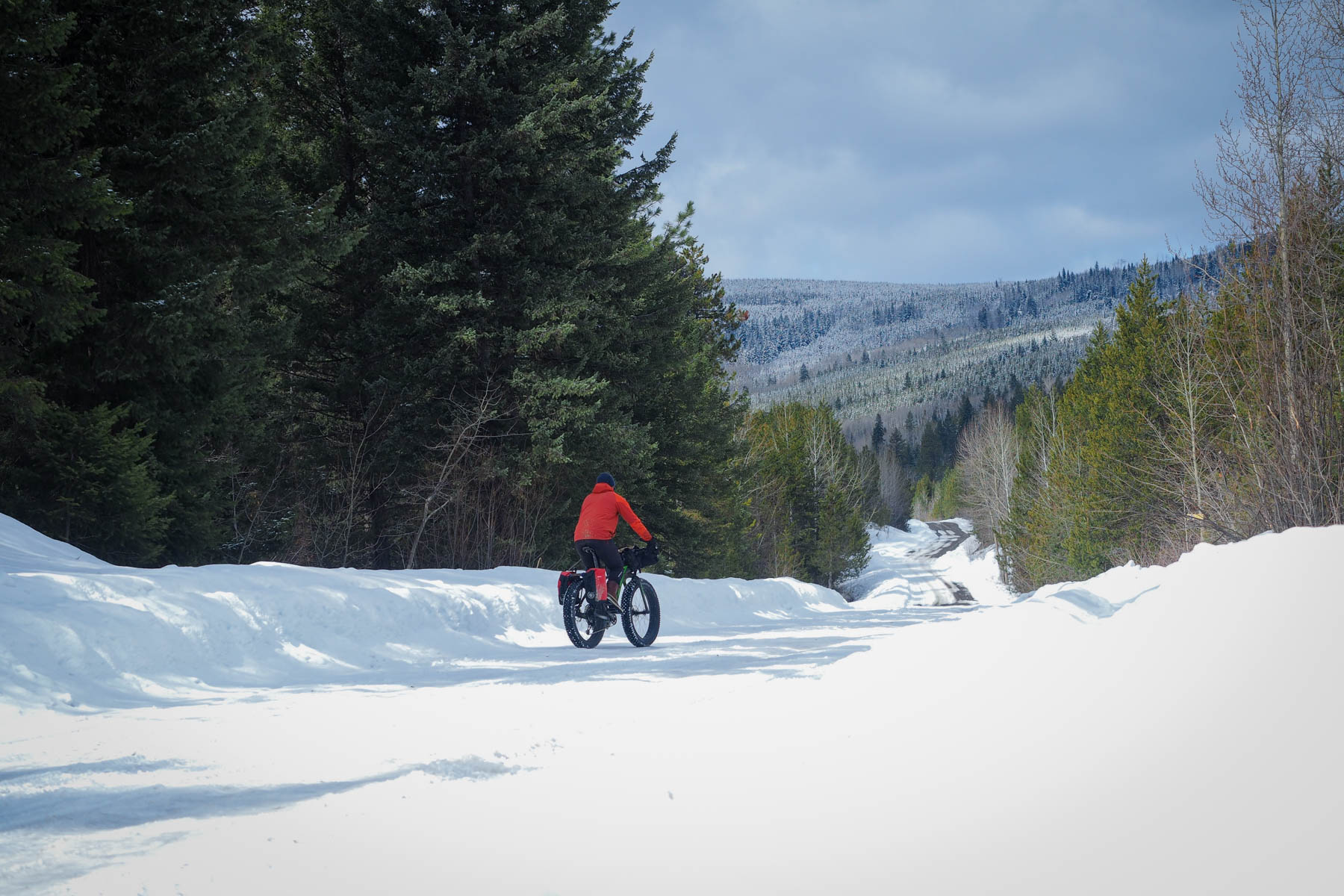

Rider Profile
Based out of Kelowna, British Columbia, Miles enjoys riding flowy singletrack, exploring service roads, and often finds himself further from home than he planned. The Fatback Corvus was loaned to Miles for this review.
- Height: 6’1” (181 CM)
- Weight: 185 lbs (84 KG)
- Inseam: 33” (83.8 CM)
- Current Location: Kelowna, BC
- Daily Driver: Surly Karate Monkey
- Favorite Route: The Fool’s Loop
Please keep the conversation civil, constructive, and inclusive, or your comment will be removed.






